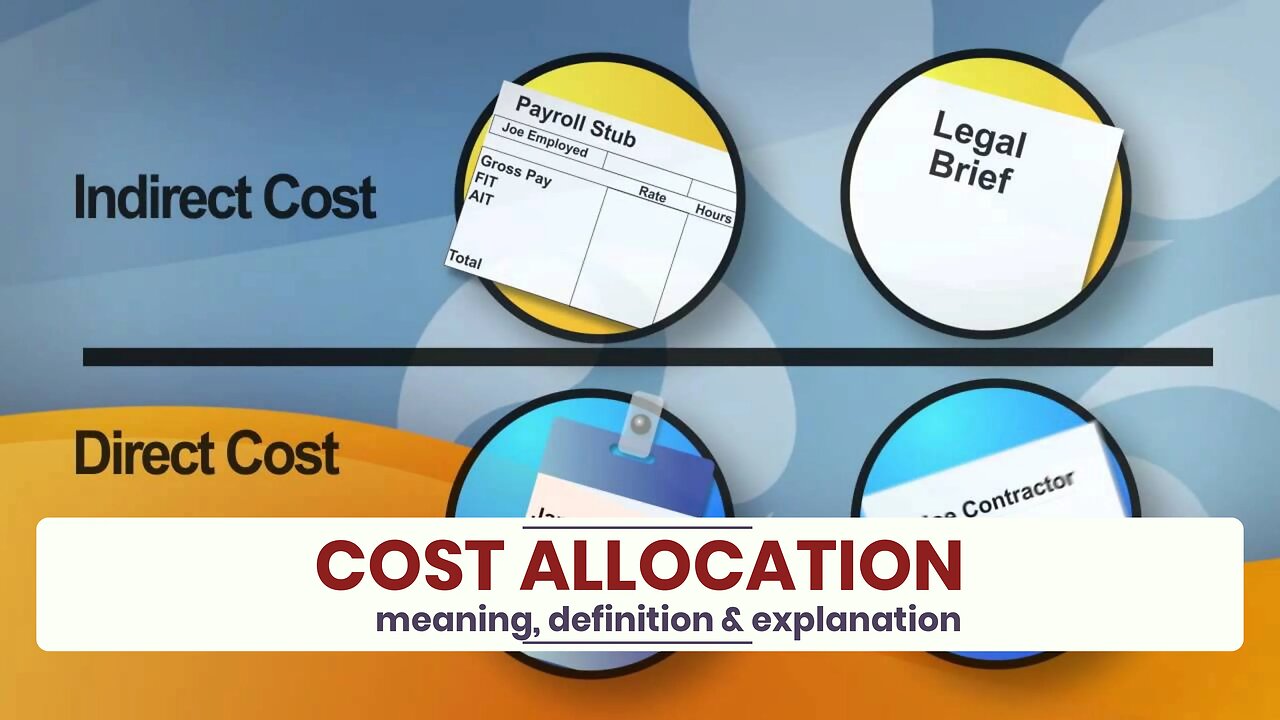Premium Only Content

What is COST ALLOCATION?
✪✪✪✪✪
http://www.theaudiopedia.com
✪✪✪✪✪
What is COST ALLOCATION? What does COST ALLOCATION mean? COST ALLOCATION meaning - COST ALLOCATION definition - COST ALLOCATION explanation. What is the meaning of COST ALLOCATION? What is the definition of COST ALLOCATION? What does COST ALLOCATION stand for? What is COST ALLOCATION meaning? What is COST ALLOCATION definition?
Cost allocation is a process of providing relief to shared service organization's cost centers that provide a product or service. In turn, the associated expense is assigned to internal clients' cost centers that consume the products and services. For example, the CIO may provide all IT services within the company and assign the costs back to the business units that consume each offering.
The core components of a cost allocation system consist of a way to track which organizations provides a product and/or service, the organizations that consume the products and/or services, and a list of portfolio offerings (e.g. service catalog). Depending on the operating structure within a company, the cost allocation data may generate an internal invoice or feed an ERP system's chargeback module. Accessing the data via an invoice or chargeback module are the typical methods that drive personnel behavior. In return, the consumption data becomes a great source of quantitative information to make better business decisions. Today’s organizations face growing pressure to control costs and enable responsible financial management of resources. In this environment, an organization is expected to provide services cost-effectively and deliver business value while operating under tight budgetary constraints. One way to contain costs is to implement a cost allocation methodology, where your business units become directly accountable for the services they consume.
An effective cost allocation methodology enables an organization to identify what services are being provided and what they cost, to allocate costs to business units, and to manage cost recovery. Under this model, both the service provider and its respective consumers become aware of their service requirements and usage and how they directly influence the costs incurred. This information, in turn, improves discipline within the business units and financial discipline across the entire organization. With the organization articulating the costs of services provided, the business units become empowered – and encouraged – to make informed decisions about the services and availability levels they request. They can make trade-offs between service levels and costs, and they can benchmark internal costs against outsourced providers.
-
 1:52
1:52
The Audiopedia
11 months agoWhat is EXECUTIVE DIRECTOR?
531 -
 5:06
5:06
UnboxRemedy
16 hours ago $0.52 earnedUNBOXING: Dimoo Quilt Phone Cases
10.3K2 -
![🟢 Live - Call of Duty [ Warzone ]](https://1a-1791.com/video/fww1/26/s8/1/L/8/a/U/L8aUy.0kob-small--Live-Call-of-Duty-Warzone-.jpg) LIVE
LIVE
Delnorin Games
1 hour ago🟢 Live - Call of Duty [ Warzone ]
71 watching -
 LIVE
LIVE
BEK TV
15 hours agoTrent Loos in the Morning 6/17/2025
191 watching -
 LIVE
LIVE
The Bubba Army
22 hours agoThe US has to get involved in the Iran Israel conflict - Bubba the Love Sponge® Show | 6/17/25
1,992 watching -
 3:25
3:25
The Official Steve Harvey
16 hours ago $1.27 earnedUnraveling Success | Steve Harvey: The Truth About Passion, Purpose & Your God-Given Gift
10.1K6 -
 16:51
16:51
James Klüg
16 hours agoInside The Philadelphia NO KINGS Protest
17.6K26 -
 29:29
29:29
The Brett Cooper Show
4 days ago $12.97 earnedLA Is On Fire & Gay Celebrities Turn Straight For Pride Month | Episode 39
66.1K43 -
 2:03:19
2:03:19
Side Scrollers Podcast
21 hours agoThis Dude Is The Problem, Disney Predator Plays VICTIM, Nexus Mods SOLD | Side Scrollers LIVE
13.6K5 -

Wahzdee
2 hours ago💥 Full Squad. Bad Decisions. Questionable Snipes – Let’s Go!
8.58K